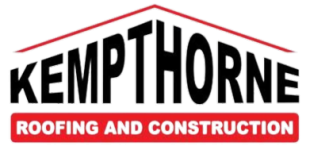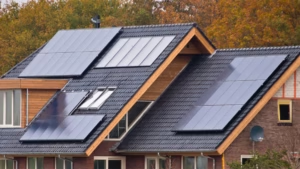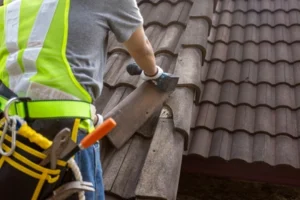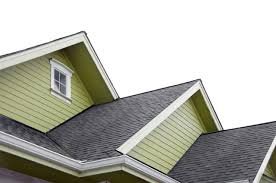Every month, utility bills arrive, and many homeowners ask the same question: How can I lower these costs? You adjust your thermostat, seal your windows, and upgrade appliances—but there’s one major area that often gets overlooked: your roof.
Your roof can be a hidden energy hog, driving up heating and cooling costs without you even realizing it. But here’s the good news: energy-efficient roofing solutions can dramatically reduce those costs—while also helping the environment and increasing your home’s value.
Let’s explore how choosing the right roof can pay off in more ways than one.
How Your Roof Impacts Energy Use
Your roof is constantly bombarded by sunlight, wind, rain, and snow. During summer, it absorbs heat, turning your attic into an oven and forcing your AC to work overtime. In winter, a poorly insulated roof leaks warmth, making your furnace burn more fuel to compensate.
Fact:
A traditional dark roof can reach 150°F (65°C) in the summer sun, radiating that heat into your home.
Energy-efficient roofing reflects more sunlight, retains less heat, and improves insulation—keeping your home comfortable with less energy.

The Components of an Energy-Efficient Roofing System
Achieving energy efficiency is about more than just slapping on new shingles. It’s about creating a system that works together to regulate temperature and airflow.
Key Elements:
- Reflective Roofing Materials – Reduce heat absorption by bouncing solar energy away.
- Insulation – Prevents heat transfer between attic and living spaces.
- Ventilation Systems – Allows hot air and moisture to escape, reducing heat buildup.
- Proper Installation – Ensures materials perform as designed with no leaks or gaps.
Bonus Tip: Many energy-efficient roofs qualify for tax credits and rebates—check your local and federal programs.
Top Energy-Efficient Roofing Materials
Let’s break down the most effective roofing options for energy efficiency, including real-world advantages and ideal climates.
1. Metal Roofing: Reflective and Resilient
Features:
- Highly reflective finishes reduce roof surface temperature by up to 50°F (10°C)
- Long lifespan (40–70 years)
- Low maintenance and recyclable
Ideal For: Hot, sunny climates, wildfire-prone areas, homes adding solar panels.
Added Benefit: Metal roofs shed snow easily in winter, reducing weight and moisture buildup.
2. Cool Roof Asphalt Shingles: Affordable Efficiency
Features:
- Special granules reflect sunlight, reducing heat absorption.
- Similar in cost to standard shingles.
- Available in light colors that enhance reflectivity.
Ideal For: Moderate climates, budget-conscious homeowners.
Note: Look for ENERGY STAR® certified shingles—they meet government standards for energy savings.
3. Clay and Concrete Tiles: Naturally Cool
Features:
- High thermal mass absorbs and slowly releases heat.
- Naturally ventilated with air gaps beneath tiles.
- Long lifespan (50–100 years)
Ideal For: Warm, dry climates (deserts, Mediterranean regions).
Added Value: Fire-resistant, durable against UV rays and extreme heat.
4. Synthetic Roofing: Innovation in Action
Features:
- Made from recycled materials, engineered for efficiency.
- Mimics slate or wood without the weight.
- Lightweight, durable, and low maintenance.
Ideal For: All climates; homeowners wanting aesthetics with performance.
Eco Bonus: Reduces landfill waste and often includes UV-resistant coatings for better reflectivity.
5. Green Roofs: Living Roof, Living Benefits
Features:
- Covered in vegetation, absorbing sunlight and insulating naturally.
- Reduces stormwater runoff and urban heat island effect.
- Lifespan of 30–50 years with proper care.
Ideal For: Urban areas, eco-conscious homeowners, flat-roof buildings.
Added Benefit: Can be a garden, habitat, or relaxation space—boosts property value in eco-forward markets.
Boosting Efficiency: Roofing Upgrades That Work
You don’t always need a full roof replacement to see energy gains. Consider these upgrades:
- Radiant Barriers: Reflective material installed under the roof deck to block radiant heat.
- Attic Insulation: Enhances thermal resistance—keeps heated/cooled air where it belongs.
- Ventilation Systems: Ridge vents, soffit vents, and attic fans reduce attic temperature by 20–30°F.
Tip: Even the most efficient materials won’t help if installation is poor. Work with certified professionals like Kempthorne Roofing & Construction for results you can trust.

Environmental Impact: Roofing for a Greener Future
Choosing energy-efficient roofing doesn’t just help you—it helps the planet.
Positive Impact:
- Reduces fossil fuel use for heating/cooling.
- Lowers greenhouse gas emissions.
- Extends roof life, reducing construction waste.
- Supports LEED certification and energy-efficient home ratings.
Fact: Energy-efficient roofs can reduce cooling demand by 10–30%, cutting your energy bill and your carbon footprint.
Final Thoughts: A Smart Roof = A Smarter Home
Energy-efficient roofing is a win-win. It saves you money, increases comfort, extends your roof’s life, and supports environmental sustainability.
Whether you’re building new or upgrading, choosing the right material and system is one of the best investments you can make. It’s a change you’ll feel every month—in comfort and cost.








